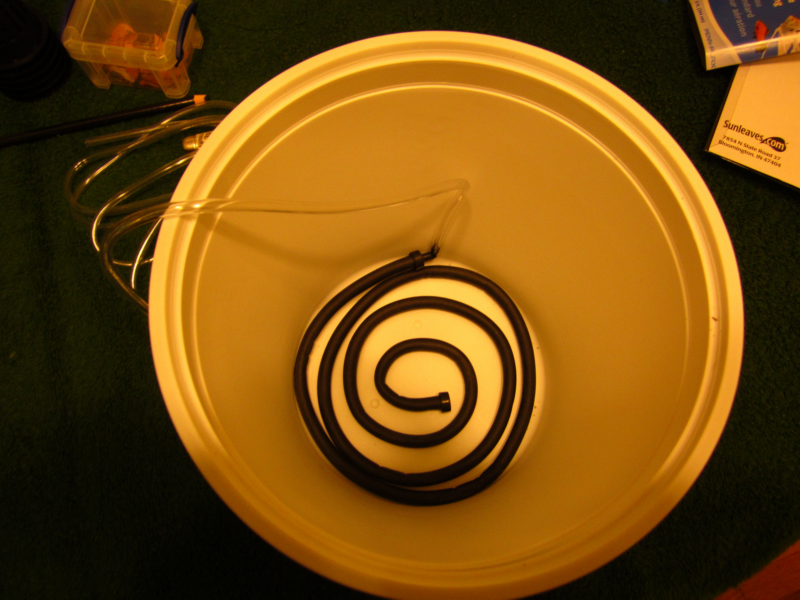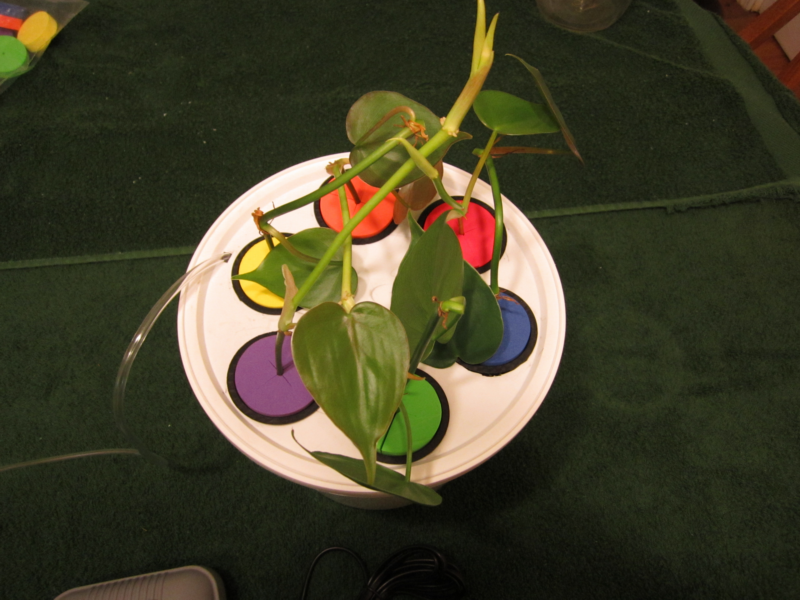Welcome back to another episode of Lost In The Farmer’s Market where the winter doldrums may have slowed things down but we’re still making progress towards the next big thing. This week we have some interesting news in the form of a winter project that may surprise some of you out there. In agriculture we have two primary camps the Organic/GMO-Free group and the Conventional group and to that end there is a variety of products out there for both. It is not my intention to turn this article into a form of ‘us versus them’ diatribe, but rather to talk about the next logical step in the means to prove that those of us in the non-GMO/Organic crowd can do exactly the same thing as the conventional folks minus the petrochemicals and so on.
So for my winter project I set out to build a cloning system with the
objective that it be as effective as a compact model that can be purchased
through a commercial source. The two examples I evaluated as the basis for what
I built can be found at the following two links.
The price increment on these models would be prohibitive for the home
grower and since one might typically use a thin solution of plant hormones to
encourage root growth well the organic label is then in question. Plant
hormones used to promote rooting have to be extracted from a plant chemically,
purified then suspended in a solution of some sort, or flat synthesized in a
lab somewhere. The powdered rooting hormone found at every garden center is
basically a thin rooting hormone held in pure talcum powder, whereas the
commercial grade rooting hormones are in liquid suspension. I should mention
here that a standard jar of powdered rooting hormone cannot be used with ‘wet’
propagation methods and costs around $6.00 for a small jar with a few ounces of
powder that may last a home grower a few years. When you get into the liquid
rooting hormones such as Dip ‘n Grow, two ounces can cost up to $15.00, and the
procedure for use is very precise.
To get around this, we at LITFM constructed a Hydro-cloning system from
components that one could buy off the shelf at a garden center, supermarket and
pet store. As you can see in the below picture our cloner is built out of a 1
gallon plastic food grade container with lid, a 44 Gallon per hour air pump, a
coil of flexible air diffuser tubing, 3’ of 3/16th fish tank airline
tubing and, six net pots and six neoprene plugs. In terms of tools I only needed a small sharp
knife and a wax pencil. Estimated construction time was about 30 minutes
 |
| All the parts you need, total cost is about $30.00. |
The first step was to shape the air diffuser coil in the bottom of the
reservoir, you would want it to follow the outer edge, and coil evenly inward
to spread the diffusion effect so the water in the reservoir has no stagnant
spots. I chose the flexible one because it can take the shape of any container
and be adjusted on the fly if needed. A large circular air stone could also do
the same job.
 |
| It looks like there’s too much air diffuser but the thing wont bubble over so it works. |
The next step is to cut the hole in the lid for your airline to go
through so you can position it to your liking. I did not completely cut it out
initially so while I did step three it wasn’t in the way.
 |
| Yes, this food grade container was a leftover from a holiday party…you can guess what was in it. |
Using one of the 2” net pots I used the wax pencil to mark where I cut
holes in the lid so the net pots could be placed through the lid to dip into
the reservoir.
 |
| Theoretically the net pots could be any size you want, I chose 2” for space-saving purposes. |
As you can see the cutting is done in this case with a small pocket
knife, but a razor or exacto knife would work equally well. Just remember to
take your time and be safe while doing this.
 |
| This was the slow part of the project. |
 |
| Presto! The perfect seating for the 2” net pots. |
Cutting out the holes for the net pots means cutting inside the marked
line so the pots sit on top of the lid and do not fall in.
 |
| It is compact enough to sit on a dining room table and quietly do its job. |
You can see all six net pots seated properly, and next the little flap
near the airline is cut and this completes the body of the Hydro-cloning
system. This is a simple little system that produces six clones at a time and
cannot have its water go stagnant. The container is food-grade so there will be
no worry of the plastic leaching anything into the water, and the best part is
that even if out in the lab its mosquito proof because of the diffuser.
 |
| Um, for note folks this is NOT a Skittles commercial! |
The last step was to insert the Neoprene cutting holders, with trimmed
cuttings in them and to turn the system on. The air pump buzzes but is barely
noticeable the gentle bubble of the diffuser putting tiny air bubbles through
the water in the reservoir is more noticeable. I might add at this stage I
added a gallon of distilled water (personal preference on this part) and well
you can see the final product in the next image.
 |
| Yup here’s what it looks like in operation. |
The first trial plant is a Heart Leaf Philodendron - Philodendron scandens which by
philodendron standards is slower to root in water but far more tolerant of
abuse then your regular philodendron. The thing is I know no matter what it
will root and having grown and sold this species before the time frame for
it. The plan is to run five trials with
the system using an increasingly difficult set of cuttings. You can bet the
results will be right here when available.
So there you have it another wintery episode of LITFM. This early post
comes on the heels of our second frozen precipitation event of the year which
means more delays in production schedule. It sort of figures that I get a LITFM
project done on time and it snows which may prevent next week’s topic. Either
way check us out next week for more wintery mayhem. Don’t forget the Fayetteville
City Market is still going on Saturdays between 9:00am and 1:00pm in downtown
Fayetteville on 325 Franklin Street.
Thank you for reading!









